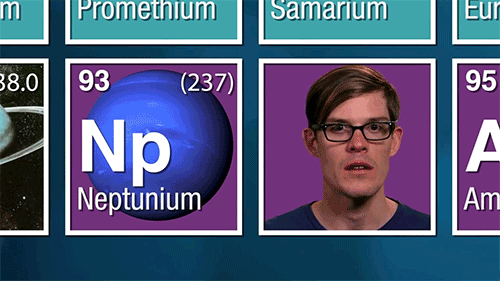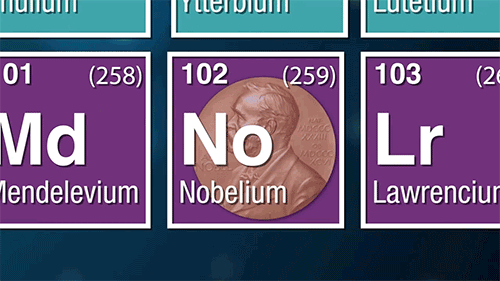Clik here to view.

Image may be NSFW.
Clik here to view.

Even Enrico Makes Mistakes…
In my "How The Elements Got Their Names" video, I dropped this little rhyme about element 93 (Neptunium), Enrico Fermi, and how his Nobel(ium) helped him get to Americ(ium):
There’s a crazy story behind 93, it was named for Italy by Enrico Fermi.
But his science was wrong, and when his Nobel came along, he snuck off to the States to be free.Confused? Well, the full story behind element 93 is a fascinating tale of bad PR, fascism, and laboratory screw-ups.
Uranium, element number 92, is the largest element (in terms of number of protons) found in nature. Every element above 92, a club known as the transuranium elements, is unstable, decaying into smaller elements and subatomic particles. In the mid-1930’s, element-hungry scientists knew that the transuraniums theoretically could exist, but didn’t have a way to make them.
Enrico Fermi, then working in Rome, figured that pummeling uranium atoms with slow-moving neutrons might birth elements 93+ thanks to a process called β- decay, where the new neutron enters the nucleus, converts into a proton, releasing an electron and antineutrino in return. The result? Uranium+1 or Uranium+2, or elements 93 and 94… theoretically, at least.
In 1934, Fermi shot some neutrons at some uranium, saw the beta decay he was looking for, and figured he had done it! Elements 93 and 94, in the proverbial bag. Time to pack his bags for Stockholm, right?
Like a cold neutrino pudding, the plot thickened. At the time of Fermi’s experiment, Italy was under the control of Benito Mussolini's fascist regime. Sensing a good PR opportunity for “Italian science” and “fascist cultural supremacy”, Mussolini's government widely publicized the finding, much to Fermi’s chagrin, who wanted to, you know, check his work and stuff.
Image may be NSFW.
Clik here to view.The first name proposed for Fermi’s #93 was Mussolinium (can you imagine if that had been approved?!) but since the element was short-lived, it was thought that Il Duce would take offense to its frailty. Instead they proposed that the new names for 93 and 94 honor ancient and poetic names for Italy: Ausonium and Hesperium.
In 1938, as these names were being considered, Fermi was awarded the Nobel Prize in Physics for his discovery. Scientific national pride swelled in pre-WWII fascist Italy. But there was just one catch. Enrico Fermi was wrong.
Soon after his Nobel, it was shown that Fermi instead split uranium by nailing it with neutrons, which produced beta decay and energy, but resulted in lighter elements, not heavier. So did Fermi get credit for discovering fission? Nope. That honor goes to Otto Hahn and Lise Meitner, who split uranium (on purpose) in 1938.
So Fermi not only lost out on discovering what would be named neptunium (thanks to Edwin Macmillan and Philp Abelson’s work in 1940), but he also missed out on discovering fission, because he didn’t know that he did it.
After his 1938 Nobel Prize ceremony (for the faux-discovery), fearing for his family’s safety in Mussolini’s Italy, Fermi emigrated directly from Stockholm to the United States, where he worked on the Manhattan Project, using his prize money to set up a new life in a new home.
Fermi had many scientific accomplishments and many successes, but the story of elements 93 and 94 show that there’s a whole lot of history, humanity, and drama behind those little boxes on the periodic table.
Image may be NSFW.
Clik here to view.

